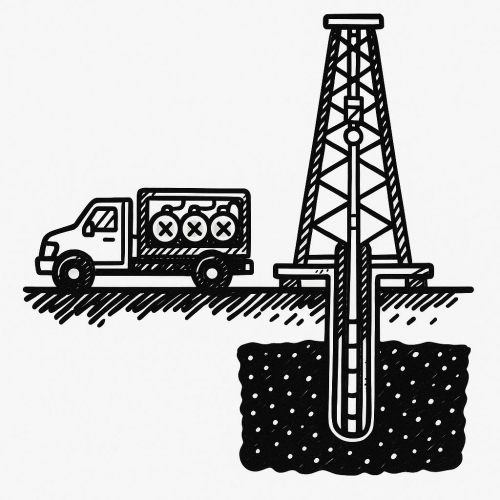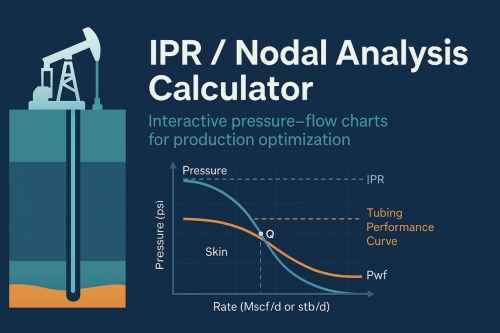Deepwater drilling is the process of creating holes in the Earth's crust using a drilling rig under deep water. The purpose is to explore for and produce oil and natural gas from reservoirs located beneath the seabed.
Deepwater drilling is a complex and challenging operation, due to the high pressures and temperatures encountered at great depths, as well as the harsh marine environment. However, it is also a vital source of energy for the world, accounting for about 20% of global oil production and 10% of global natural gas production.
Deepwater drilling rigs
Deepwater drilling rigs are specially designed vessels or platforms that can operate in water depths of 1000 feet (305 meters) or more. There are two main types of deepwater drilling rigs:
- Drillships are self-propelled vessels that can move from one location to another without assistance. They are typically used in the deepest waters, as they can be positioned over the wellbore with great precision.
- Semi-submersible drilling rigs are floating platforms that are anchored to the seabed. They are less maneuverable than drillships, but they are more stable in rough seas.
Deepwater drilling process
The deepwater drilling process begins with the rig being positioned over the wellbore. A riser pipe is then lowered from the rig to the seabed. The riser pipe provides a conduit for the drilling fluid and wellbore returns to circulate.
The drilling fluid is a mixture of water, mud, and chemicals that helps to lubricate the drill bit, cool the drill string, and remove cuttings from the wellbore. The wellbore returns are a mixture of drilling fluid and cuttings that are brought back to the surface for disposal.
Once the riser pipe is in place, the drill string is lowered into the wellbore. The drill string is a long string of hollow pipes that rotates the drill bit at the bottom. The drill bit cuts through the rock and earth formations to create the wellbore.
As the wellbore is drilled, the drilling fluid circulates through the riser pipe and back to the rig. The drilling fluid is then cleaned and recirculated back down the wellbore.
Once the wellbore has reached the desired depth, the drill string is removed and a casing is installed. The casing is a strong steel pipe that lines the wellbore to prevent it from collapsing.
Once the casing is in place, the well is completed and oil and gas production can begin.
Challenges of deepwater drilling
Deepwater drilling is a challenging operation, due to the high pressures and temperatures encountered at great depths, as well as the harsh marine environment. Some of the key challenges include:
- High pressure and temperature: The pressure and temperature at great depths can be extreme. This can make it difficult to control the drilling fluid and wellbore returns, and it can also damage the drill bit and other equipment.
- Harsh marine environment: Deepwater drilling rigs must be able to withstand the harsh marine environment, including high winds, waves, and currents.
- Complexity of the operation: Deepwater drilling is a complex operation that involves a wide range of equipment and personnel. This can make it difficult to manage and coordinate the operation effectively.
Safety and environmental considerations
Deepwater drilling is a high-risk activity, and there is always the potential for accidents and environmental damage. Some of the key safety and environmental considerations include:
- Blowouts: A blowout is an uncontrolled release of oil and gas from the wellbore. Blowouts can be caused by a number of factors, including equipment failure and human error.
- Oil spills: Oil spills can occur at any stage of the deepwater drilling process. Oil spills can have a devastating impact on marine life and ecosystems.
- Damage to the seafloor: Deepwater drilling can damage the seafloor, particularly if the riser pipe is not properly positioned.
Conclusion
Deepwater drilling is a complex and challenging operation, but it is also a vital source of energy for the world. The industry is constantly developing new technologies and practices to improve safety and reduce environmental impact.
Recent developments in deepwater drilling
In recent years, the deepwater drilling industry has made significant progress in developing new technologies and practices to improve safety and reduce environmental impact. Some of the key recent developments include:
- New well control technologies: New well control technologies are being developed to help prevent and control blowouts. These technologies include improved blowout preventers, real-time monitoring systems, and new drilling fluids.
- Improved oil spill response: The industry has developed improved oil spill response plans and technologies. These plans and technologies are designed to minimize the impact of oil spills on marine life and ecosystems.
- Reduced environmental impact: The industry is working to reduce the environmental impact of deepwater drilling. This includes developing new methods for drilling and completing wells that minimize damage to the seafloor

%20(1).png)



